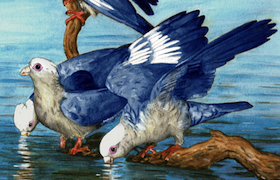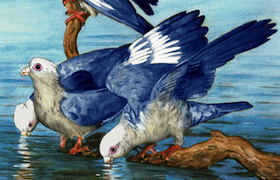
Art is born out of our collective desire to come to terms with our own humanity, and it is at least as resilient as we are. Great civilizations have risen, and then fallen, and time after time it’s their artistic contributions that we remember: Sophocles’ plays outlived Hellenic Greece, Virgil’s Aeneid outlived the Roman empire, Michelangelo’s David still inspires awe nearly three hundred years after the fall of the House of Medici, Mozart’s operas are still cultural mainstays two centuries after the height of the Habsburg monarchy, and, despite the fact that Great Britain’s reign as a major colonial power ended over 70 years ago, almost every person on the planet knows Monty Python’s Parrot Sketch.
The parrot may not be up there with Mozart operas, but it works well as an attention-getting bit for something unusual and positive about just one item in today's troubled world.
Whatever may happen in the current crisis over the Metropolitan Opera's labor contracts, on the musicians' website, Met principal timpanist Jason Haaheim looks to the future with confidence, based on the experience of millenniums.
Going counter to the doomsayers' listing of disappearing and struggling companies coast to coast — from New York City Opera to San Diego's resurgent one — Haaheim cites examples of robust organizations in Chicago, Houston, Dallas, St. Louis, and ticket sales of 85% to 99% of capacity in seven European houses.
He might have added many others, not least the San Francisco Opera, which has weathered the recession that began in 2008.

